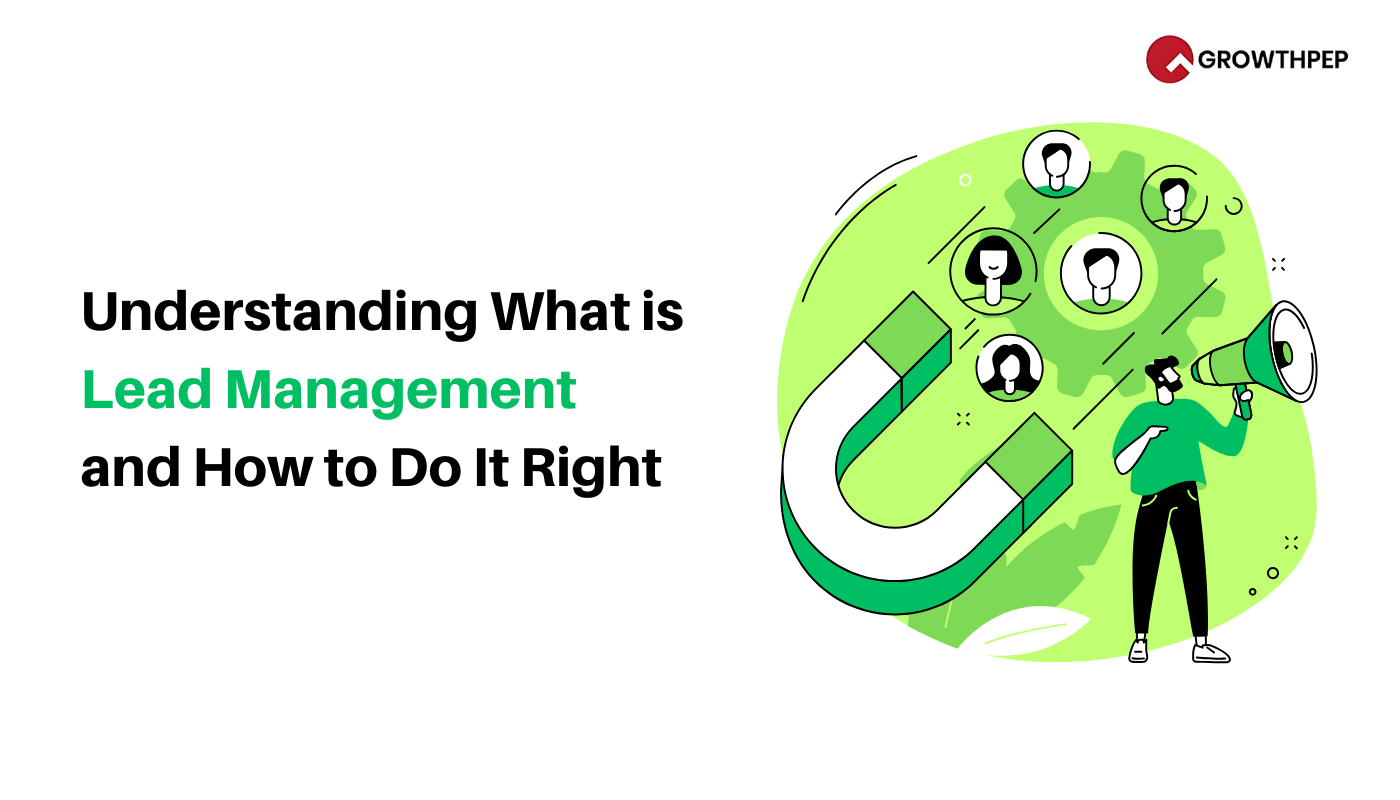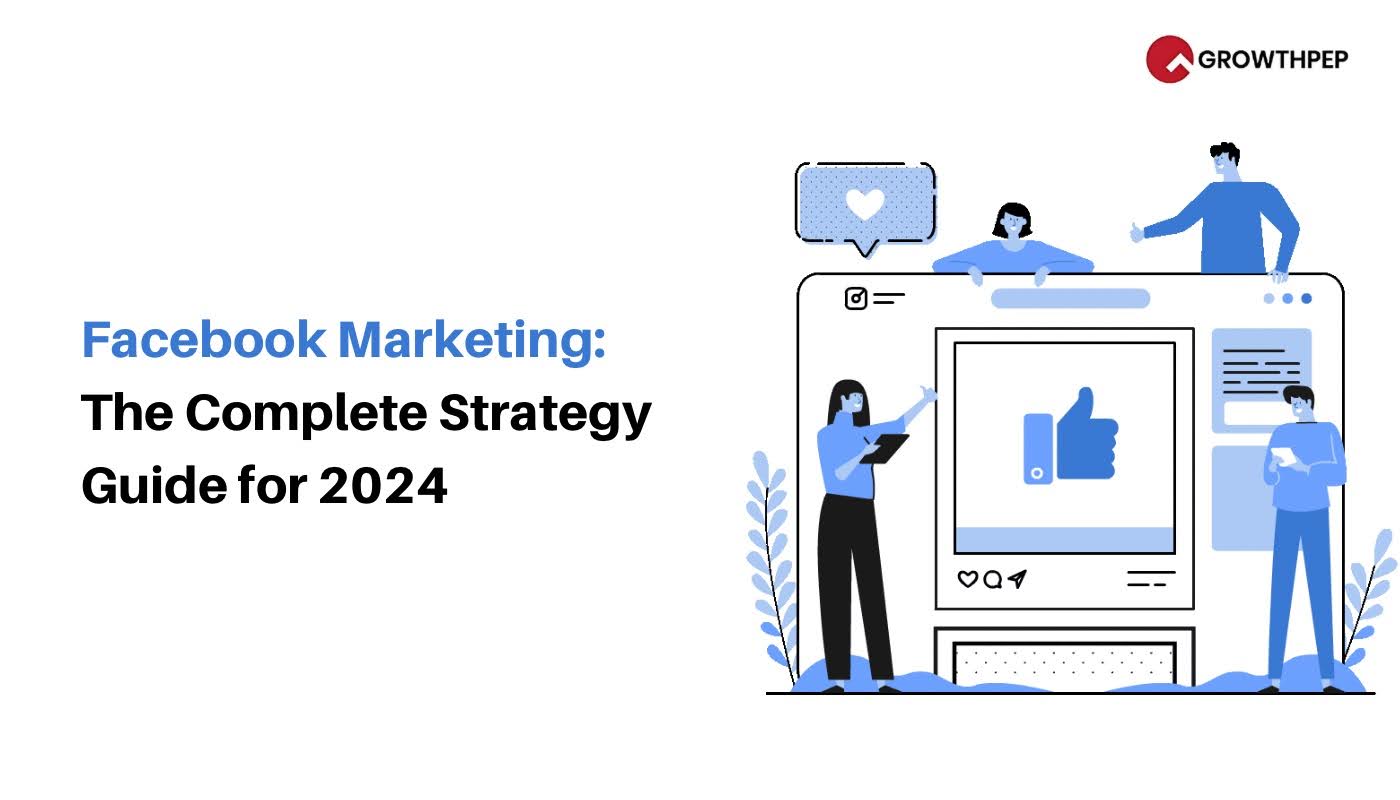Understanding What is Lead Management and How to Do It Right
Leads are like pancakes; the first one is usually a bit of a throwaway – unless you master lead management!
Lead management is a critical part of the sales and marketing cycle, encompassing acquiring, tracking, nurturing, and converting potential customers into loyal clients. In today’s highly competitive market, simply generating leads isn’t enough; businesses must manage them strategically to optimise conversion rates. Effective lead management involves identifying suitable leads, monitoring their interactions, and engaging them with personalised content at each stage of the buyer’s journey. By implementing a structured lead management system, businesses can prioritise high-quality leads, streamline their sales process, and improve customer relationships, leading to increased revenue and long-term business success.
This blog will explain the key components of lead management, how to execute it properly and explore best practices for maximising your sales and marketing efforts.
Definition and Purpose of Lead Management
Lead management is a systematic process that businesses use to acquire, track, qualify, nurture, and convert potential customers (leads) into paying clients. It’s about generating leads and managing them effectively throughout their journey. This process involves various steps such as capturing leads, assigning them to appropriate salespeople, nurturing them with relevant content, and finally converting them into paying customers.
The primary purpose of lead management is to streamline the sales and marketing efforts and increase conversion rates. Lead management allows businesses to:
- Track and Nurture Potential Customers: The process makes it easier to monitor where leads are in their buying journey and engage them with the appropriate content and interactions.
- Convert Leads into Customers: Lead management aims to turn leads into paying customers by tailoring the messaging and nurturing process to meet each lead’s needs.
- Improve Sales Efficiency: A well-organised lead management system ensures sales teams focus on the most qualified leads, maximising marketing efforts’ return on investment (ROI).
By implementing effective lead management practices, companies ensure that every potential lead is adequately nurtured, reducing the chances of missing any sales opportunity.
Now that you’ve learned about lead management let’s examine the types of leads you might encounter.
Also Read: Guide to Generating Leads With Facebook Ads
Types of Leads
Leads are not one-size-fits-all. Understanding the different types of leads is critical in creating a customised approach for managing them effectively. Let’s break down the types of leads by several classifications:
1. Classification by Temperature
Leads can be classified based on their readiness to buy, often called their “temperature.” These types include:
- Cold Leads: Potential prospects have yet to show little interest in your offerings. They may need to be more familiar with your business, and reaching them often requires more extensive nurturing efforts, such as providing educational content or general awareness marketing.
- Warm Leads: These leads have shown some level of interest by engaging with your content, subscribing to newsletters, or following your social media. They are still waiting to buy but are more likely to convert with continued nurturing.
- Hot Leads: Hot leads are highly engaged and ready to purchase. They’ve interacted deeply with your brand, have specific questions about pricing or product features, and need only a tiny push, like a special offer, to convert.
2. Classification by Qualification
Qualification refers to how well a lead aligns with your business’s product or service offering. The primary categories here are:
- Information Qualified Leads (IQLs): These individuals are just starting their research. They’ve shown interest in general information, such as downloading an ebook or reading a blog post, but are far from making a purchasing decision.
- Marketing Qualified Leads (MQLs): These leads have engaged more deeply with your marketing efforts, indicating a higher level of interest. They’ve possibly signed up for webinars or requested specific information and are moving closer to the decision phase.
- Sales Qualified Leads (SQLs): SQLs have been vetted by the marketing and sales teams and are ready for direct sales engagement. These leads meet the criteria for becoming a customer and are prepared for one-on-one conversations.
- Product Qualified Leads (PQLs): PQLs are leads who have used your product through a free trial or freemium model and have already experienced some value. They are more likely to convert since they’ve had firsthand experience with the product.
3. Classification by Acquisition Point
Another way to classify leads is by where they were acquired:
- Organic Leads: These are leads generated through unpaid channels like SEO. Organic leads are typically more engaged as they’ve found your business through their research.
- Inbound Leads: Leads actively engage with your content through blog posts, webinars, or form submissions. They’ve come to you and are already familiar with your brand.
- Outbound Leads: Outbound leads are generated through proactive marketing efforts like cold emails, cold calls, or direct outreach. Because they may need to be more familiar with your brand, they require more nurturing.
- Referral Leads: These leads are referred to your business by existing customers or partners. Since they come from a trusted source, they are typically warmer and have a higher conversion rate.
Consider seeking expert guidance from specialists like Growthpep to design effective nurturing strategies tailored to each lead category.
Now that you know the types, let’s look into the lead management process.
Also Read: Performance Marketing Strategies in E-commerce 2024
What is the Lead Management Process
Following a structured process is essential to manage leads effectively to ensure no lead falls through the cracks. Here are the main steps in the lead management process:
1. Lead Generation
Lead generation is the process of attracting potential customers to your business. This can be done through a variety of channels, including:
- Content Marketing: Creating valuable content such as blogs, videos, and ebooks to attract potential leads.
- Social Media Marketing: Using platforms like Instagram, LinkedIn, or Twitter to engage with your target audience.
- Paid Advertising: Utilising platforms like Google Ads or Facebook Ads to target specific demographics and bring them to your website.
- SEO: Optimising your website and content for search engines to attract leads organically.
Lead generation aims to build an ongoing flow of potential customers entering your sales funnel.
2. Lead Capture
Lead capture involves gathering the necessary contact information from potential leads, such as their name, email, phone number, and company name. Standard lead capture techniques include:
- Landing Pages: These pages offer valuable resources, such as whitepapers or ebooks, in exchange for the visitor’s contact details.
- Forms: Asking website visitors to fill out forms when signing up for newsletters or scheduling a demo.
- Chatbots: Automated chatbots engage website visitors and collect their contact information.
The more strategic your lead capture methods, the more valuable information you can gather to help guide your lead management efforts.
3. Lead Qualification
Lead qualification evaluates each lead to determine whether they fit your product or service well. This step often involves using predetermined criteria, such as budget, decision-making authority, need, and timeline (commonly known as BANT) to assess how likely a lead is to convert.
Lead qualification helps to:
- Save time on leads that are likely to convert.
- Focus sales efforts on leads that are ready to make a purchasing decision.
4. Lead Nurturing
Lead nurturing builds relationships with leads over time, often through personalised content and communication. This can include:
- Email Marketing: It involves sending relevant content, such as blog posts, product updates, or case studies, based on the lead’s interests.
- Webinars and Events: Hosting events that provide valuable insights and address the specific pain points of your leads.
- Social Media Engagement: Engaging with leads on social platforms through direct messages or sharing valuable content.
The goal is to keep the lead engaged and move them closer to a buying decision.
5. Lead Conversion
Lead conversion is the point where a lead becomes a customer. This process may involve:
- Sales Offers: Providing incentives like discounts or limited-time offers to encourage a purchase.
- Product Demos: Offering one-on-one product demonstrations to answer any remaining questions.
- Follow-up Communication: Ensuring that sales teams maintain regular communication to keep the lead engaged until they make a purchase decision.
Effective conversion strategies are vital to turning qualified leads into paying customers.
6. Lead Distribution
Lead distribution is the process of assigning leads to the appropriate sales representatives based on factors such as:
- Geography: Assigning leads based on their geographic location.
- Industry: Assigning leads based on the industry they belong to.
- Sales Expertise: Matching leads with sales representatives specialising in a particular product or service.
Efficient lead distribution ensures that the right sales team members work with the right leads at the right time.
7. Lead Scoring
Lead scoring is a technique for ranking leads based on their behaviour and conversion likelihood. For example, a lead who downloads a whitepaper visits your pricing page, and signs up for a webinar may score higher than someone who only visits your homepage.
The purpose of lead scoring is to:
- Prioritise Sales Efforts: Help sales teams focus on the most promising leads.
- Optimise Lead Nurturing: Identify which leads require more attention and nurturing.
8. Lead Segmentation
Lead segmentation involves dividing leads into specific groups based on demographics, behaviour, or other factors. Common ways to segment leads include:
- Demographic Segmentation: Segmenting leads based on factors like age, industry, or location.
- Behavioural Segmentation: It involves grouping leads based on their actions, such as how they interact with your website or emails.
Lead segmentation allows businesses to tailor their communication and strategies for different groups, making interactions more relevant and personalised.
9. Lead Tracking and Analytics
Tracking leads’ interactions throughout their journey is essential for understanding their needs and optimising your approach. Tools like CRM systems allow businesses to:
- Monitor Lead Activity: Track interactions such as email opens, website visits, and content downloads.
- Analyse Sales Trends: Identify patterns in lead behaviour and conversion rates to optimise your lead management process.
Lead tracking and analytics provide valuable insights that can improve your overall marketing and sales strategy.
Having this process nailed down is crucial, but wait, there’s more! To truly excel at lead management, you must use some best practices. Let’s check them out!
Also Read: Top 6 Tools for Search Engine Marketing in 2024
Best Practices for Lead Management
Implementing best practices is critical to optimising your lead management strategy. Here are some essential tips:
1. Systematic Approach to Managing Leads
Create a straightforward, systematic approach to capturing, nurturing, and following up with leads. A disorganised lead management process can result in missed opportunities and lost sales. Using a CRM (Customer Relationship Management) system is one of the best ways to keep track of leads and their interactions.
2. Regular Follow-ups
Staying in touch with leads is crucial, especially when nurturing cold and warm leads. Regularly following up with relevant content, personalised emails, and phone calls can keep your business top-of-mind.
3. Data-driven Decisions
Utilise data to guide your lead management strategy. You can identify trends and improve your nurturing efforts by tracking and analysing how leads interact with your business. Tools like Google Analytics, CRM platforms, and lead scoring systems provide insights into lead behaviour, allowing for more effective targeting.
4. Automation Tools
Leverage marketing automation tools to streamline your lead management efforts. Automation can help you track lead interactions, score leads, and deliver personalised content at scale, freeing up your sales team to focus on closing deals.
Furthermore, let’s look into the tools and technologies used for lead management.
Also Read: Strategies for Lead Generation in Digital Marketing
Tools and Technologies for Lead Management
Businesses can utilise various tools and technologies to manage leads effectively. Here are some critical categories, along with specific tool names:
1. CRM Software
CRM software centralises customer data, allowing for efficient lead tracking and management. Notable options include:
- Salesforce: A comprehensive CRM with extensive features, including AI capabilities for automation and analytics.
- HubSpot CRM: Offers a free version with essential lead management features and integrates well with other HubSpot tools.
- Zoho CRM: Known for its user-friendly interface and automation features, it is suitable for businesses of all sizes.
- Zendesk Sell: Focuses on enhancing sales productivity with a mobile-friendly interface.
- Pipedrive: Features customisable sales pipelines and an intuitive interface, ideal for small to medium-sized businesses.
2. Marketing Automation Platforms
These platforms help nurture leads through automated marketing efforts. Key tools include:
- Marketo: Provides robust marketing automation features, including lead nurturing and campaign management.
- HubSpot Marketing Hub: Integrates seamlessly with HubSpot CRM for comprehensive lead management and content distribution.
- ActiveCampaign: Combines email marketing with automation capabilities to engage leads effectively.
3. Engagement Tools
Engagement tools facilitate communication with leads across various channels. Examples include:
- Intercom: Offers live chat, chatbots, and customer engagement tools to enhance communication.
- Drift: Focuses on conversational marketing through chatbots and real-time messaging.
- Slack: While primarily a team collaboration tool, it can be integrated with CRM systems to enhance lead communication.
4. Analytics Tools
Analytics tools are crucial for optimising lead management processes by providing insights into performance metrics. Some practical options are:
- Google Analytics: Tracks website interactions to analyse lead behaviour and campaign effectiveness.
- Tableau: Offers advanced data visualisation capabilities to help businesses understand their lead data better.
- HubSpot Analytics: Integrated within HubSpot’s ecosystem, it provides insights into lead interactions and marketing performance.
With all this comes a significant challenge of choosing the right Lead Management System. Let’s understand the various factors you need to consider while choosing one.
Also Read: Digital Marketing Strategies for Ecommerce: Tips and Examples
How to Choose a Lead Management System
Selecting the right lead management system involves careful consideration of several factors:
1. Factors to Consider
Consider a few factors before selecting the right lead management system. These factors are:
- Industry Fit: Ensure the software aligns with your specific industry needs.
- Scalability: Choose a system that can grow with your business.
- User-Friendliness: A user-friendly interface minimises training time and increases adoption rates.
2. Cost Considerations
Evaluate the total cost of ownership, including subscription fees, implementation costs, and potential ROI. Consider:
- Budget Constraints: Ensure the solution fits within your financial parameters.
- Return on Investment (ROI): Assess how the tool can enhance productivity and lead conversion rates.
3. Importance of Software Integration
A lead management system should seamlessly integrate with existing processes and tools, such as:
- CRM Systems: Ensuring data flows smoothly between systems enhances efficiency.
- Marketing Tools: Integration with marketing automation platforms can streamline campaigns and reporting.
By carefully evaluating these aspects, businesses can select a lead management system that meets their current needs and supports future growth.
Conclusion
Effective lead management is the foundation of a successful sales process. Businesses can significantly increase their conversion rates by understanding the different types of leads, implementing a systematic lead management process, and adopting best practices like regular follow-ups and data-driven strategies. Utilising tools such as CRM systems and marketing automation software further enhances lead management efforts, making the process more efficient and scalable.
Mastering lead management unlocks the potential for business growth, higher conversion rates, and stronger customer relationships. It’s not just about gathering leads but managing them in a way that nurtures long-term success.
Looking to scale your business with expert lead generation? Growthpep is an ROI-driven performance marketing agency specialising in social media marketing, search engine marketing, and e-commerce sales. Let Growthpep’s targeted ad campaigns drive your business success across digital channels.
Contact Growthpep and get started today!
Sorry, the comment form is closed at this time.








descargador de videos de likee
October 20, 2024Somebody essentially lend a hand to make significantly posts I might state That is the very first time I frequented your web page and up to now I surprised with the research you made to create this particular put up amazing Excellent job